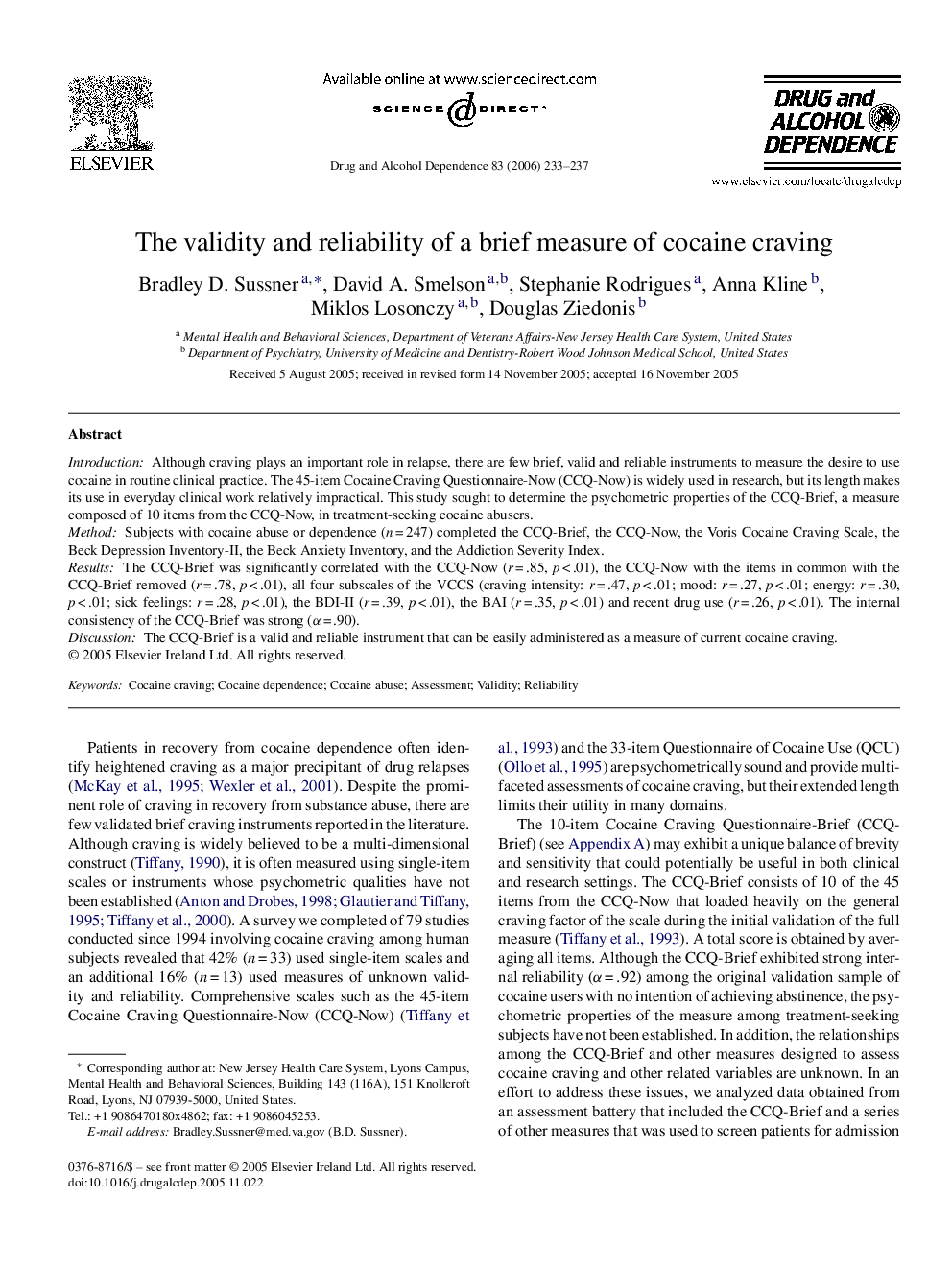| Article ID | Journal | Published Year | Pages | File Type |
|---|---|---|---|---|
| 1071480 | Drug and Alcohol Dependence | 2006 | 5 Pages |
IntroductionAlthough craving plays an important role in relapse, there are few brief, valid and reliable instruments to measure the desire to use cocaine in routine clinical practice. The 45-item Cocaine Craving Questionnaire-Now (CCQ-Now) is widely used in research, but its length makes its use in everyday clinical work relatively impractical. This study sought to determine the psychometric properties of the CCQ-Brief, a measure composed of 10 items from the CCQ-Now, in treatment-seeking cocaine abusers.MethodSubjects with cocaine abuse or dependence (n = 247) completed the CCQ-Brief, the CCQ-Now, the Voris Cocaine Craving Scale, the Beck Depression Inventory-II, the Beck Anxiety Inventory, and the Addiction Severity Index.ResultsThe CCQ-Brief was significantly correlated with the CCQ-Now (r = .85, p < .01), the CCQ-Now with the items in common with the CCQ-Brief removed (r = .78, p < .01), all four subscales of the VCCS (craving intensity: r = .47, p < .01; mood: r = .27, p < .01; energy: r = .30, p < .01; sick feelings: r = .28, p < .01), the BDI-II (r = .39, p < .01), the BAI (r = .35, p < .01) and recent drug use (r = .26, p < .01). The internal consistency of the CCQ-Brief was strong (α = .90).DiscussionThe CCQ-Brief is a valid and reliable instrument that can be easily administered as a measure of current cocaine craving.
